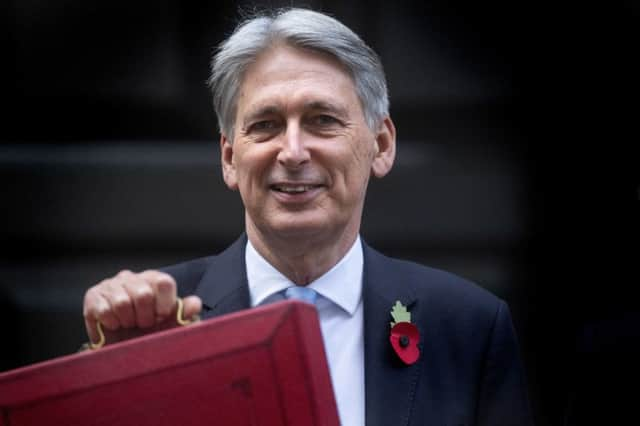Jenny Ross from Which?: Why Britain’s most hated tax might be about to face changes


Read more:
Described by the Office of Tax Simplification (OTS) as ‘almost uniquely unpopular’, no doubt many of you are shuddering just at the mention of it. A 2015 YouGov survey saw it crowned the most unfair tax, with just 22% of people considering it to be fair.
Many object to it in principle, seeing it as a tax double whammy where wealth that has already been subject to income tax during your lifetime is once again in HMRC’s sights when you die. Its high headline rate of 40% and fiendishly complex rules don’t do anything to endear it.
Advertisement
Hide AdAdvertisement
Hide AdLast year, Chancellor Philip Hammond called upon the OTS to review the whole system to make sure that it’s ‘fit for purpose’ and that ‘the experience of those who interact with it is as smooth as possible.’ Unfortunately for those who view inheritance tax with the same distaste as they do cockroaches, calls for it to be abolished have fallen on deaf ears. But the OTS has now recommended sweeping changes to simplify things.
A quick recap on the rules as they stand: if your estate is worth less than £325,000, your heirs won’t have to pay anything to HMRC. This tax-free allowance – known as the ‘nil-rate band’ – has remained static for a decade, meaning the number of estates that are liable to pay tax has gone up.
However, if you’re leaving your home to your children or grandchildren, you now get an extra £150,000 allowance, so married couples or civil partners can leave a total of £950,000 without the taxman taking a cut.
Inheritance tax receipts have climbed by an average of 11% each year since 2009, and in 2017-18 they boosted government coffers by a record £5.7 billion. Yet this came from a relatively small number of estates. Fewer than 25,000 estates are landed with a bill each year, which is less than 5% of all deaths.
Advertisement
Hide AdAdvertisement
Hide AdBut the hefty 40% tax rate means that these bills can be substantial. By giving away assets during your lifetime, it’s possible to reduce the amount that will be subject to this rate by thousands of pounds.
You can give away up to £3,000 a year tax-free, plus up to £5,000 to your child when they get married. You can also make small gifts of less than £250 – as long as they are to different people.
The OTS is proposing to replace the dizzying array of allowances with a single personal gift allowance, meaning you’d be able to give away up to a fixed (but currently unspecified) amount tax-free each year.
At the moment, gifts that fall outside of the set allowances can also be tax-free, but only if you live for at least seven years after making them. If you die within seven years of making a gift it’ll be subject to tax – but not necessarily at 40%. The rate goes down based on how many years it’s been since the gift was made – a system known as taper relief. If you made the gift six years before your death, for example, the rate would be reduced to 8%.
Advertisement
Hide AdAdvertisement
Hide AdThe OTS thinks the seven-year period is ‘too long, and not justified by the amount of inheritance tax raised’, and is proposing that gifts made more than five years before death should be exempt. This would mean that fewer people would be hit with a tax bill, but there’s a sting in the tail: the OTS also thinks taper relief is a ‘source of complexity’ and wants to do away with it altogether, meaning that those who were given gifts five years ago or less would end up paying much more.
In reality, most gifts don’t become taxable because the £325,000 inheritance tax allowance is allocated to gifts made within seven years of the giver’s death before the rest of the estate. But if the value of gifts does exceed this amount, it’s the recipient who becomes liable for tax, which the OTS thinks is ‘counter intuitive’. In many cases, the recipient simply isn’t aware that this is the case and may already have spent the money.
Instead, the OTS wants any tax due on lifetime gifts to be paid by the estate. It also wants the tax-free allowance to be allocated proportionally across all gifts, rather than in chronological order.
The OTS didn’t just look at the way the tax works, but at the admin that accompanies it. A staggering number of estates have to go through the rigmarole of filling out forms for HMRC even when no inheritance tax is due – 10 times the number of estates that actually end up paying it.
Advertisement
Hide AdAdvertisement
Hide AdGiven the difficult situation that executors are in, you’d hope that this admin was relatively straightforward. No such luck – in most cases the forms can’t be completed online, and you might even struggle to work out which one you need to use in the first place (there’s a short and a long version).
The OTS has rightly called for change, and ultimately wants the government to provide a digital system for inheritance tax.
The government will now consider all of the OTS’ recommendations and issue a response – but with political attention focused firmly elsewhere, it seems unlikely that significant rule changes will happen quickly.
In the meantime, progress needs to be made on the paperwork side so that people aren’t forced to jump through administrative hoops during what’s likely to be one of the most stressful times in their lives.